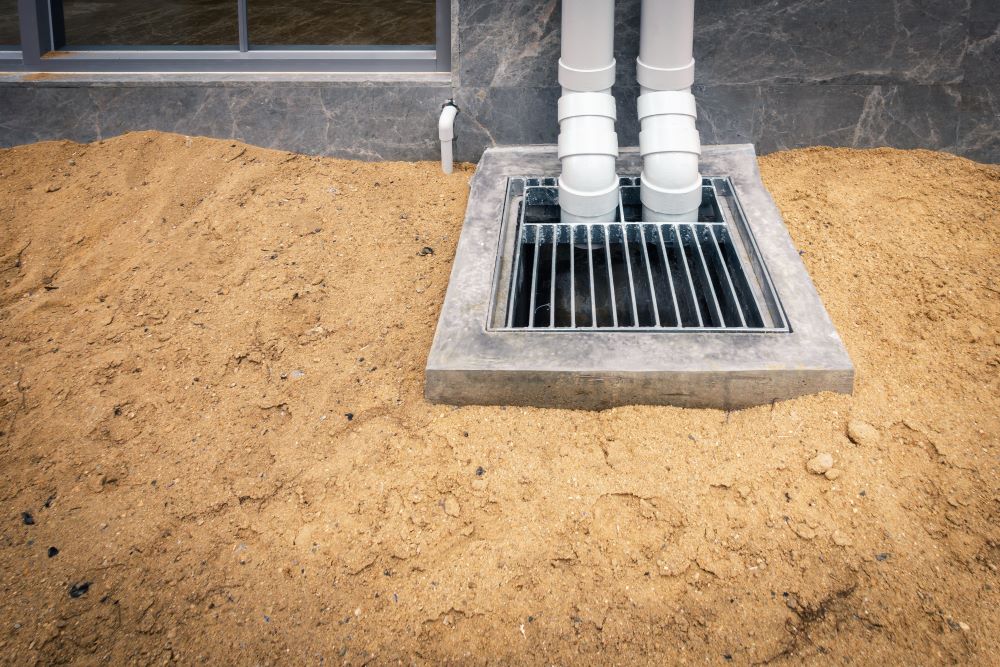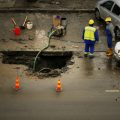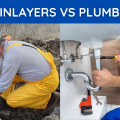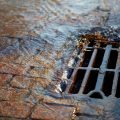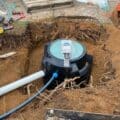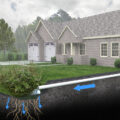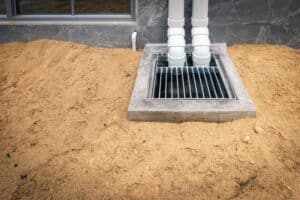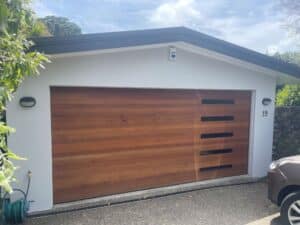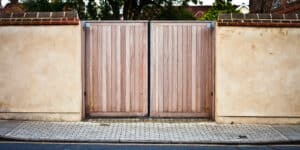Drainage is one of the most critical aspects of any property’s infrastructure, whether residential, commercial, or industrial. A well-designed and properly installed drainage system ensures the efficient removal of wastewater and stormwater, preventing issues such as waterlogging, structural damage, and foundation erosion.
The role of a drainlayer is not just about laying pipes—it’s about ensuring that water flows correctly, preventing long-term damage, and safeguarding your property’s value. Suppose drainage is poorly designed or incorrectly installed. In that case, it can result in serious problems that require costly repairs, including water damage to walls and floors, subsidence, and even health hazards caused by standing water and mould growth.
These risks are particularly high in New Zealand, where varied climates and terrain demand drainage systems suited to specific environmental conditions.
Hiring a professional drainlayer ensures your property’s drainage system complies with all legal and safety standards, reducing the risk of expensive problems down the track. Drainlayers must follow New Zealand’s strict building regulations, ensuring all installations meet safety and efficiency standards.
A properly installed system not only protects against structural issues but also improves overall property resilience, especially in areas prone to heavy rainfall or flooding. By working with a qualified and experienced drainlayer, you can have confidence that your drainage system will perform efficiently for years to come. Investing in quality drainlaying services upfront can save thousands in future repairs and prevent potential disputes with local councils over compliance issues.
Key Qualifications and Certifications to Look for in a New Zealand Drainlayer
Understanding Drainlayer Licensing and Accreditation
In New Zealand, drainlaying is a regulated profession that requires specific qualifications and certifications. The Plumbers, Gasfitters, and Drainlayers Board (PGDB) oversees licensing and ensures that only trained and competent professionals carry out drainlaying work. Before hiring a drainlayer, it is essential to verify that they are licensed by the PGDB, as unlicensed individuals are not legally allowed to install or modify drainage systems. A licensed drainlayer has undergone rigorous training, passed industry examinations, and demonstrated practical competence in handling a wide range of drainage projects.
Working with an unlicensed drainlayer not only puts your property at risk but can also result in legal and financial consequences, as non-compliant drainage work may need to be redone at the property owner’s expense.
The distinction between licensed and unlicensed drainlayers is significant. Licensed professionals have met industry standards and are accountable for their work, ensuring they follow best practices. In contrast, unlicensed individuals lack the required knowledge and expertise, increasing the likelihood of faulty installations and regulatory violations.
A professional drainlayer understands the complexities of underground drainage, stormwater management, and wastewater disposal, ensuring every aspect of the system is designed for optimal performance. Before hiring a drainlayer, always request their PGDB license number and verify their accreditation online through the official PGDB website. This simple step provides peace of mind and ensures that your drainage work is completed to the highest industry standards.
Experience and Specialisations in Drainlaying Services
Experience is another crucial factor to consider when choosing a drainlayer in New Zealand. Drainage systems vary widely depending on whether they serve a residential home, a commercial building, or an industrial facility. An experienced drainlayer understands the nuances of different drainage requirements and can design solutions tailored to the specific needs of the property.
Specialised services such as stormwater drainage, wastewater systems, septic tank installations, and large-scale commercial projects require a higher level of expertise. Hiring a drainlayer with extensive experience in your type of project ensures that the work is completed efficiently and effectively.
Verifying a drainlayer’s past projects is a good way to assess their expertise and reliability. Reputable drainlayers will have a portfolio of completed work and may provide references from satisfied clients. Checking for industry affiliations, such as memberships with trade organisations, can also indicate a high level of professionalism.
When evaluating a potential drainlayer, ask about their experience with similar properties and their approach to problem-solving. A skilled drainlayer should be able to identify potential challenges and provide solutions that ensure long-term performance. Choosing an experienced professional reduces the likelihood of drainage failures and gives you confidence in the quality of the installation.
Essential Factors to Consider When Hiring a Drainlayer for Your Property
Local Knowledge and Compliance with New Zealand Drainage Regulations
Drainage regulations vary between regions in New Zealand, so hiring a drainlayer with in-depth local knowledge is essential. Different areas have unique environmental factors that influence drainage design, such as soil composition, rainfall patterns, and council requirements. A drainlayer familiar with your region’s regulations will ensure that your system complies with all necessary standards, reducing the risk of costly fines or required modifications.
For example, properties in flood-prone areas require more robust stormwater management solutions, while coastal regions may need drainage systems designed to handle high water tables. Drainlayers with local expertise understand these challenges and can recommend the best materials and installation techniques for long-term durability.
Council regulations also play a crucial role in drainage work, with strict requirements for connections to main sewer lines and stormwater systems. Engaging a knowledgeable drainlayer ensures a seamless approval process and avoids delays caused by non-compliance.
Reputation and Reviews: Finding a Trustworthy Drainlayer
A drainlayer’s reputation is a strong indicator of their reliability and quality of work. Checking online reviews, trade directories, and testimonials from previous clients provides valuable insights into their professionalism and customer service. Positive feedback and high ratings indicate consistent performance, while negative reviews may reveal potential issues such as poor workmanship, missed deadlines, or lack of communication.
Word-of-mouth recommendations are particularly valuable in the drainlaying industry. Asking neighbours, friends, or local contractors for referrals can help you find a reputable drainlayer with a proven track record. Additionally, reputable drainlayers are often members of industry organisations that uphold high standards of practice.
When reviewing feedback, watch for red flags such as complaints about unfinished work, overcharging, or lack of responsiveness. A trustworthy drainlayer will have a solid reputation and be willing to provide references from satisfied customers.
Cost vs. Quality: Getting the Best Value for Your Drainlaying Project
Cost is an important consideration when hiring a drainlayer, but it should never be the sole deciding factor. While it may be tempting to choose the cheapest option, low-cost services often come with hidden risks such as subpar materials, inadequate workmanship, or lack of compliance with regulations. The cost of drainlaying varies based on factors such as project size, complexity, and required materials.
To ensure you receive fair pricing, request detailed quotes from multiple drainlayers and compare their offerings. Transparent pricing should include all labour, materials, and potential additional costs. Avoid drainlayers who provide vague estimates or fail to outline the full scope of work. Instead of focusing solely on price, prioritise value—investing in a skilled and reputable drainlayer ensures a durable system that prevents costly repairs in the future.
Questions to Ask Before Hiring a Drainlayer in New Zealand
Before making a final decision, ask the following questions to assess a drainlayer’s suitability for your project:
- Are you fully licensed and insured for drainlaying work?
- Can you provide references from previous clients?
- Do you offer a guarantee or warranty on your work?
- How do you handle unexpected drainage issues during a project?
A professional drainlayer should be able to answer these questions confidently and provide clear documentation of their credentials and past work.
The Benefits of Hiring a Professional Drainlayer for Your Property
Engaging a professional drainlayer provides long-term cost savings by ensuring a high-quality installation that minimises future maintenance needs. Compliance with New Zealand’s drainage laws protects against legal issues and ensures the system meets safety standards. A properly installed drainage system reduces the risk of water damage, improving property durability and value.
Choosing the Best Drainlayer for Your Property in New Zealand
Selecting the right drainlayer requires careful consideration of licensing, experience, reputation, and cost. Prioritising expertise and compliance over price ensures a reliable system that protects your property. By asking the right questions and conducting thorough research, you can confidently choose a drainlayer who delivers exceptional results.

